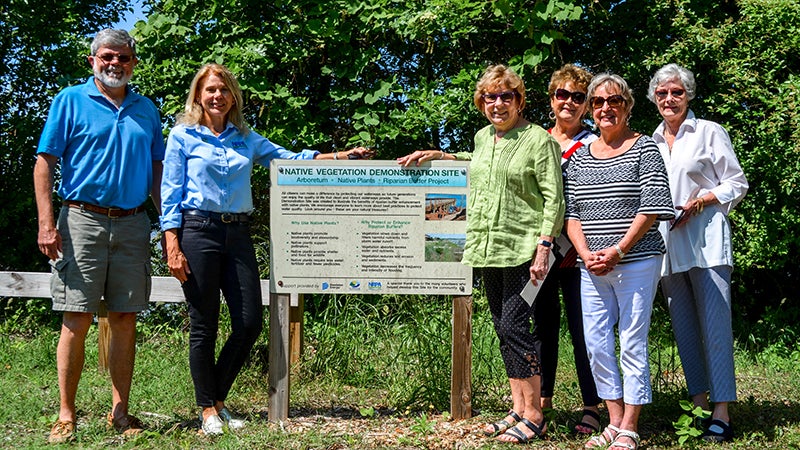NRPA receives Garden Club grant
Published 10:44 pm Friday, June 7, 2019

- The Nansemond River Preservation Alliance received a grant from the Nansemond River Garden Club in May. Pictured, from left, are NRPA treasurer John Wass, NRPA President Elizabeth Taraski, the Garden Club’s Civic Chairman Kay Goldberg, Ways and Means co-chairman Mary Anne Riddick, Civic Committee member Mary Jane Naismith and President Linda Consolvo.
The Nansemond River Preservation Alliance received a $2,405 grant from the Nansemond River Garden Club in May that will support both the NRPA’s native plant and conservation project at Sleepy Hole Park, and its Nansemond Watershed Initiative.
NRPA President Elizabeth Taraski wrote in an email that the garden club’s grant will help to finish the second phase of the “NRPA Native Plant and Conservation Project — Outdoor Environmental Classroom” at Sleepy Hole Park.
“The club’s generous donation will fund the purchase of native trees and shrubs, and fabricate and post botanical signs,” Taraski wrote. “A sign will also be posted acknowledging the (Nansemond River Garden Club’s) support of the project, along with a message about conservation.”
Additionally, the grant will fund the purchase of water quality scientific instrumentation for the NRPA Nansemond Watershed Initiative: “Connecting the Classroom with the Environment Program.”
“The grant is closely aligned with The Garden Club of Virginia’s conservation, native shrubs and trees and educational initiatives,” Taraski wrote. “The project complements the WaterWise Homes Program that was developed by the Nansemond River Garden Club and NRPA to educate all citizens on best practices that they can do to protect the waterways.”
The conservation project at Sleepy Hole Park began in 2016 as a collaboration between NRPA and Suffolk Parks and Recreation. Over a two-year period, 250 NRPA volunteers prepared the site, planted 500 native trees and shrubs, spread mulch, pruned and weeded, according to Taraski.
The site is approximately 300, feet and the majority of funding for the native trees and shrubs was secured through NRPA’s fundraising efforts.
This project is part of a solution to the pollution in the Nansemond River and other waterways. The Virginia Department of Environmental Quality has classified the Nansemond River and several creeks as impaired due to “non-point pollution,” and the Virginia Department of Health’s Division of Shellfish Sanitation has closed a majority of Suffolk’s waterways to shellfish harvesting.
“The solution is complex and must be resolved through a multi-faceted approach,” Taraski wrote.
NRPA’s Sleepy Hole site has native shrubs and trees along the shoreline and upland buffer area to help filter stormwater runoff and reduce the amount of sediment and pollutants that flow into the Nansemond River and creeks.
According to Taraski, sediment decreases the clarity of the water, which can harm aquatic life. Pollutants like phosphorus and nitrogen contribute to algal blooms, and high bacterial levels in the water will continue to negatively impact the oyster industry.
The site also offers plenty of opportunities for families to learn in this “Outdoor Environmental Classroom.”
“By visiting the site, citizens have the opportunity to learn about native plants,” Taraski wrote, as well as the value these plants have for property owners. “Children, families and (adults) learn about conservation and the importance of native vegetation, while being outdoors and enjoying the beautiful view of the Nansemond River.”




